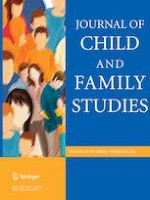22-01-2021 | Original Paper
The Effects of High Intensity versus Low Intensity Exercise on Academic Productivity, Mood, and Behavior among Youth with and without ADHD
Gepubliceerd in: Journal of Child and Family Studies | Uitgave 2/2021
Log in om toegang te krijgenAbstract
Preliminary evidence suggests exercise enhances mental health and cognitive performance among typically developing children and children with attention deficit hyperactivity disorder (ADHD). The goal of this study was to determine whether improvements vary depending on exercise intensity (e.g., high vs. low) or outcome domains (e.g., mood, behavior, academic productivity), and whether effects vary over time. Participants were 130 children (73% in ADHD group) aged 6 to 13 who completed daily exercise (high or low intensity) across 15 days as well as daily measures of pre- and post-activity mood, behavior and academic productivity. Results indicated no differences in the effectiveness of low- versus high- intensity exercise for youth with and without ADHD on overall mood, behavior, or academic productivity. Moreover, although there were no differences in academic productivity over time among children with and without ADHD in the low or high intensity exercise conditions, there were differences in behavior and mood over time among children with and without ADHD in the high, but not low, intensity condition. Specifically, relative to children without ADHD, children with ADHD had a wider range of behavior problems immediately after high intensity exercise and showed worse initial moods and more negative change over time in mood. Findings suggest that high intensity exercise delivered in certain formats can be associated with worse mood and behavior over time among youth with ADHD. Future research is needed to draw firmer conclusions about the relative short- and long-term effectiveness of high and low intensity exercise for youth with and without ADHD.
